Unexpectedly, the provincial blog has collected so many interesting cultural relics
Author:Changjiang Daily Time:2022.08.29
At 19:00 on August 26th, the "Understanding China -Hubei Qianli Yangtze River Bank" in the Wuhan Metropolitan Circle of the Wuhan Metropolitan Circle was entered into the Hubei Provincial Museum, known as the "Jingchu Cultural Hall". In addition to the collection of national treasure -level cultural relics such as Zeng Houyi, Yue Wang Gou Jianjian, Tiger Birds Drum, Yunmeng Sleeping Tiger Qin Jian, the curator of the museum and the director of the Hubei Provincial Cultural Relics and Archeology Research Institute also passed the live broadcast to the live broadcast to the live broadcast. The visiting group and netizens explained many interesting collections of cultural relics.
Chu State Woman even wore wigs
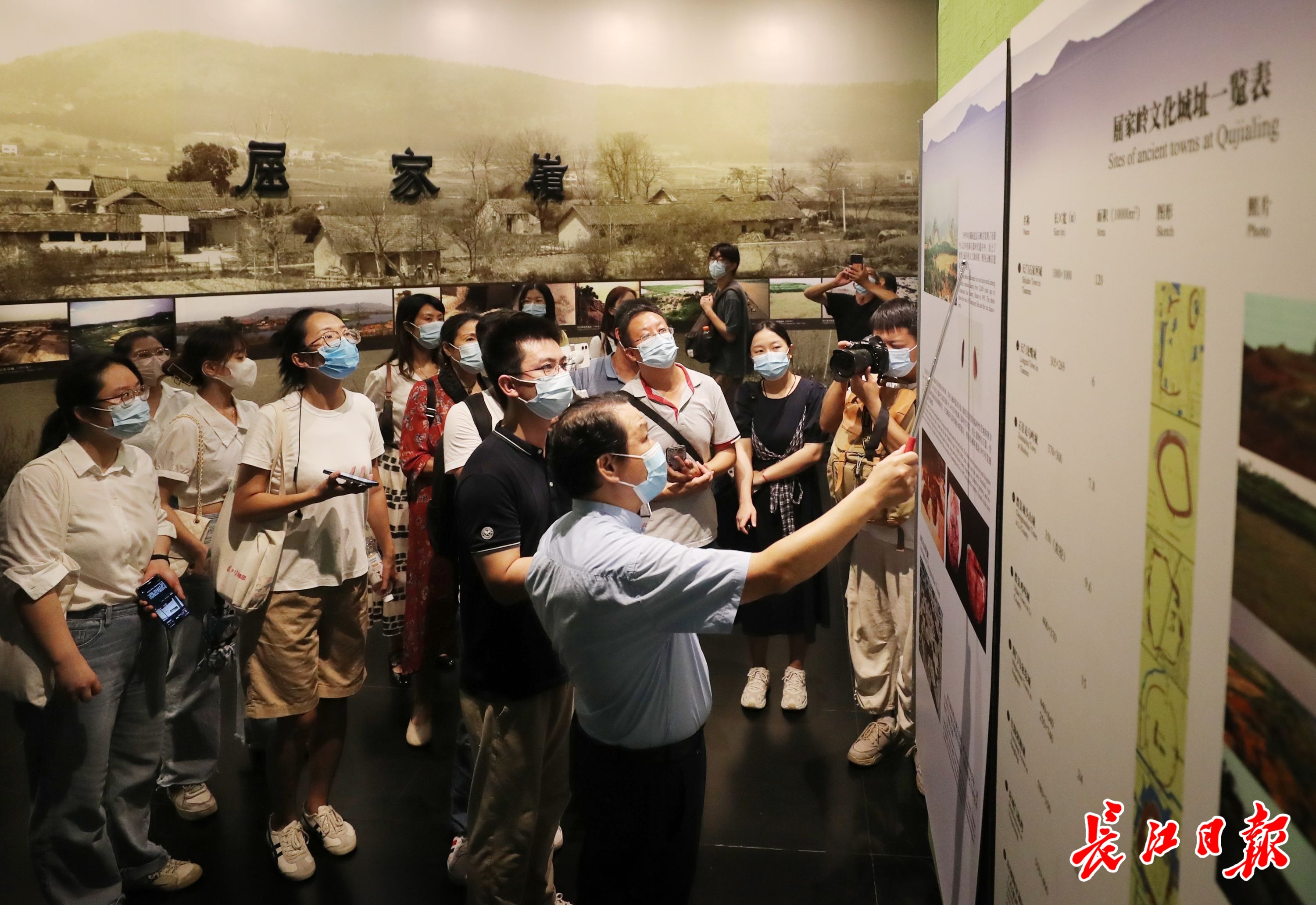
The visiting team members visited the Hubei Provincial Museum under the leadership of the curator. Changjiang Daily reporter Qiu Yan
In the "800 Years of Chu" exhibition hall, a wig attracted the attention of the members of the visiting delegation. "This is a wig unearthed from a woman's tomb. There are comb and wigs, indicating that the ancients love beauty." Fang Qin's explanation made everyone surprise.
According to reports, the ancient aristocratic men and women have the tradition of wearing wigs. "Zhou Li" records that the Queen's wigs have full -time officials in charge. Archaeological discovery has unearthed more than 30 wigs. The famous tomb of the famous Jiangling Mashan Tomb and Changsha Mawangdui Han Tomb has been unearthed.
■ Men use a dressing box
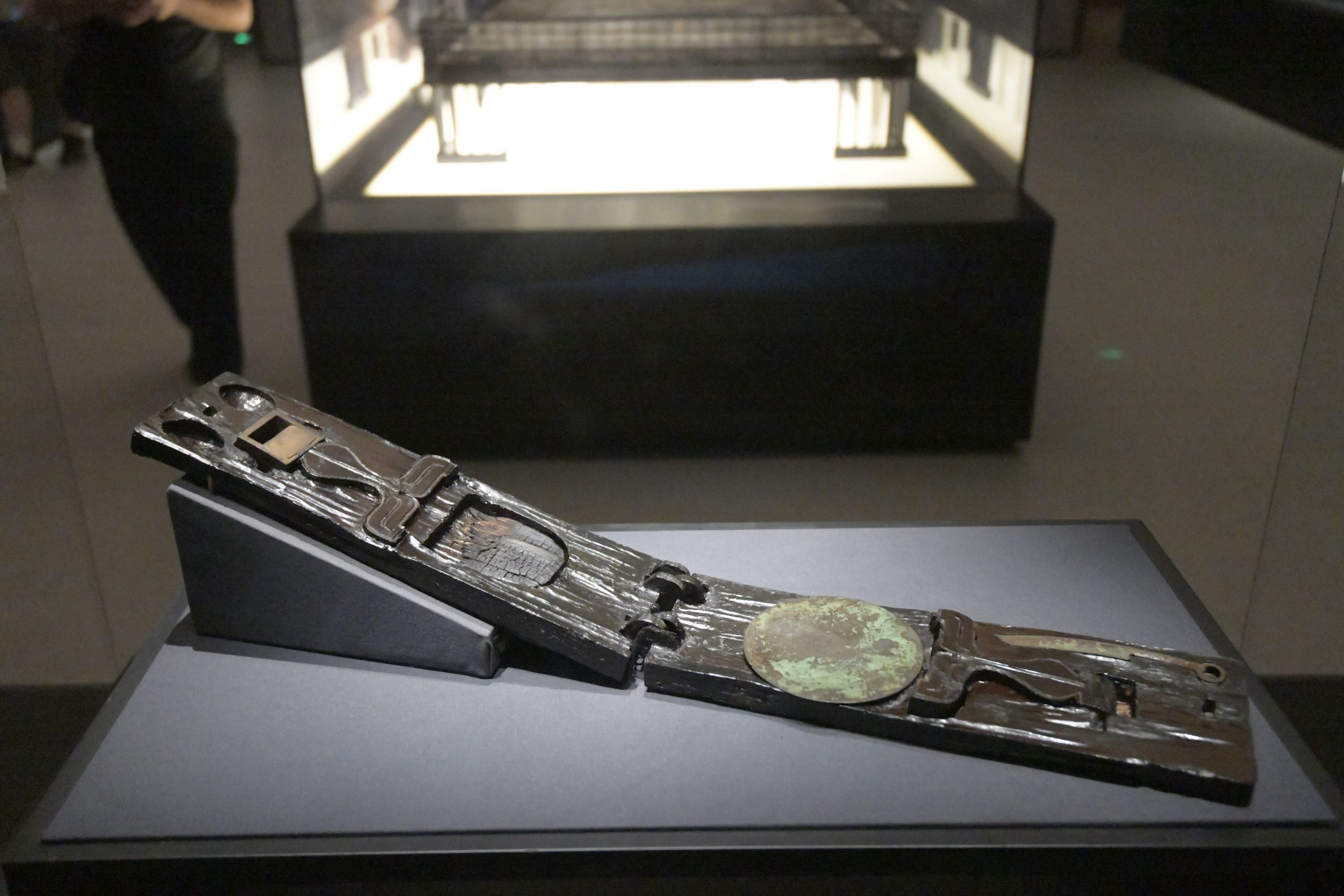
The dressing box unearthed in the tomb of the Chu State. Lu Shiwen Photo
What's even more surprising is that the Chu people already have a makeup box that can be carried. "You can't imagine this thing. This was unearthed from the men's tomb, which shows that the men of Chu were also very beautiful at that time." Fang Qin said.
This makeup box is a wooden tire paint unearthed from Jiuliandun. The lacquer lacquer appears in the middle and late period of the Warring States Period, mainly as a makeup. In addition to dressing and dressing utensils, the initial 除 is also used to put food and other supplies.
The producer of this lacquer 制作 这 这 这, because of the aptitude, design different shapes of holes on the body and device cover, such as circular and oval shapes to put in copper mirrors, wooden crickets, scrapes, lipid boxes, etc. Damning utensils. Because the designer made full use of the space, there were two boxes of fat oil, a piece of wood, a scraper, and a copper mirror in the lacquer with 35 cm long, 11.2 cm wide, and 4 cm thick. The most ingenious design is the supporting parts of the upper and lower parts of the middle and lower parts of the pupa. The supporting parts of the supporting parts and the body are made of bronze. You can also take a mirror, which makes people feel comfortable when they look out.
The earliest serial painting in China
"This is the earliest serial painting in China." Fang Qin explained to everyone before the painting of the character car and horse travel.
This painted character car and horse travel are the earliest makeup. When discovering, it is also equipped with dressing utensils such as peppercorns and copper mirrors. The outer wall of the lacquer cover is this exquisite lacquer painting, which develops 87.4 cm in length and 5.2 cm wide, depicting the scenes of characters and horses during the Warring States Period. Although more than 2,000 years, you can still see bright colors.
"Looking at it, this is a pair of serial paintings." Fang Qin explained that the picture was separated by trees into five sections. The owner of the tomb was traveling 3 horses, the servant knelt on the ground, and the owner followed the follower, followed by the two horses of the wife, showing the grand scene of noble travel. Subsequently, the travel team ran away, and two geese were added in the sky to express dynamics. Next, there was a transition in the middle. In the middle of the two trees, pigs and dogs were the atmosphere of joy. Immediately after, the tomb owner arrived at his destination, and a group of people greeted him. "Five serial painting shows the scene of the tomb owner's travel, cleverly isolate a few pictures with trees, flying with geese, pork and dog jumping to set off the atmosphere, showing the dynamic picture, the level of art is very high." Fang Qin said.
The Chu people "communicate the world" through the tiger bird frame drums "
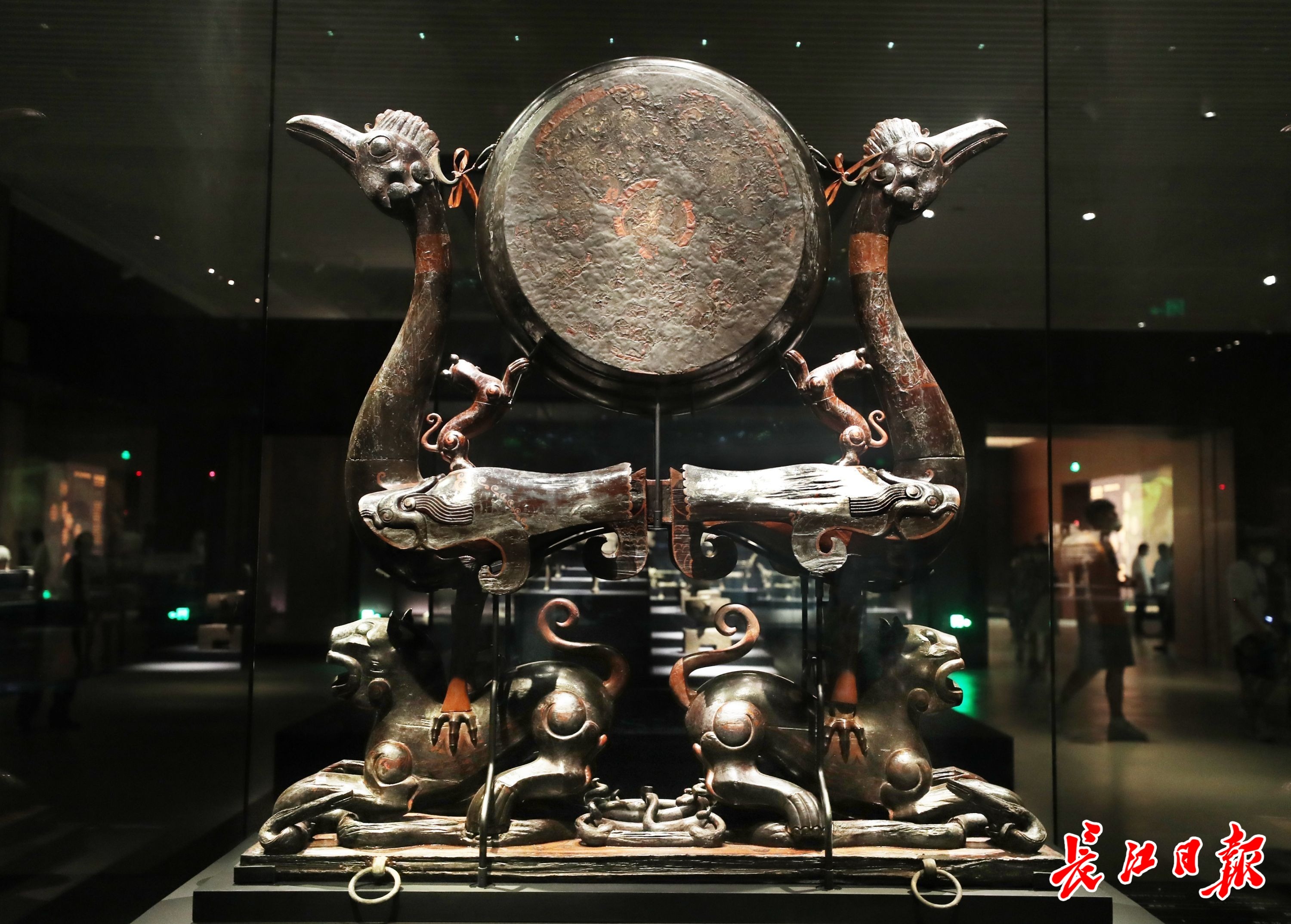
On August 26, 2022, the Hubei Provincial Museum, the "Tiger Bird Bird Drum" during the Warring States Period of the "800 Years of Chu State" exhibition, was unearthed in the tomb No. 2 2 of Jiulian Dundun, Zaoyang, Hubei in 2002. Changjiang Daily reporter Qiu Yan
The Tiger Birds of the Hubei Provincial Museum was unearthed in the Tomb 2 Tomb 2 Tomb of the Tomb of Chu Chu, Jiulian, Zaoyang, Hubei Province in 2002.
"Tiger Bird Bird Drum is unique to Chu Cultural and is the iconic symbol of Chu culture." Fang Qin explained to the visiting group that Phoenix is the god bird in heaven and the totem of the Chu people. The King of Beasts is the representative of the divine power on the ground. Two lively little tigers show their vitality. "They are combined to show the momentum of ingenuity. The Chu people knocked on the tiger bird rack drum sacrifice. They wanted to communicate the world through the phoenix and the tiger. ","
Some netizens left a message on the Yangtze River Daily and the Yangtze River Network Live Platform: I did not expect that the provincial blog has also collected so many interesting cultural relics!
(Zhang Yushan, a reporter from the Yangtze River Daily Gao Ximing)
【Edit: Zhang Jing】
For more exciting content, please download the "Da Wuhan" client in the major application markets.
- END -
Lylum textbook delete Lu Xun's work?Human Education Society response
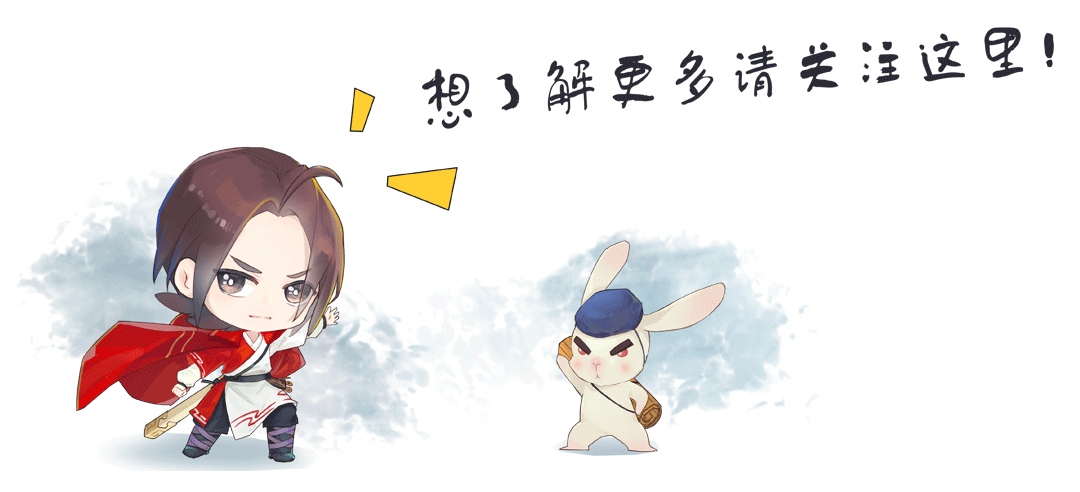
The People's Education Press released on the afternoon of June 29 through the offi...
"Rumor": What is the real Zhang Ailing?
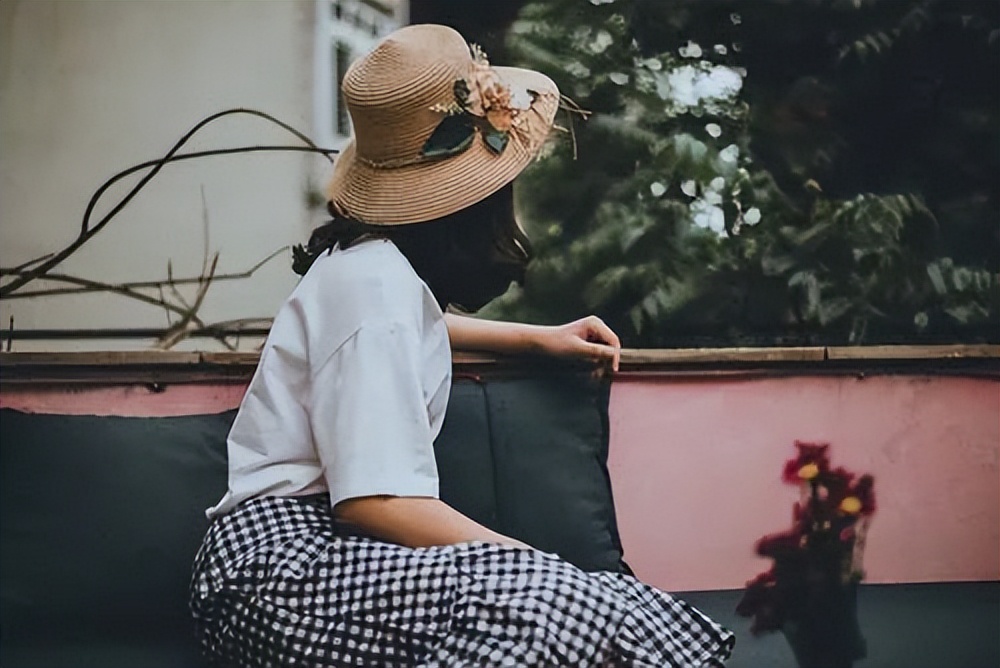
I don't know if there are readers like me, and the name Zhang Ailing is more than ...